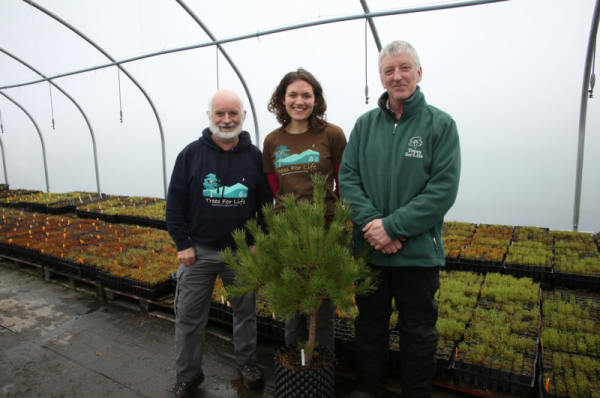Save our trees …oh and create jobs, growth and all that other good stuff
One doesn’t traditionally think about enterprise and conservation in the same sentence. One charity in the Scottish Highlands however is dispensing with tradition and embracing an entrepreneurial approach to its work.
Trees for life is a much acclaimed conservation charity with a fusion of old world ideas and new world vision. The charity runs a forest restoration project near the banks of Loch Ness.
Conserving our precious planet is nothing new but the good people at Trees for Life are pioneering in their efforts to revolutionise traditional conservation practices.
The core purpose and vision of Trees for Life is to restore the Caledonian Forest and all its constituent species of flora and fauna to the Scottish Highlands. They aim to do this by using enterprising and innovative techniques that not only increase their chances of success, but also ensure that the knock on effects benefit the community and the economy as a whole, proving that conservation need not be an antithesis to progress.
Trees for Life purchased the 10,000-acre Dundreggan estate in Glenmoriston in the Scottish Highlands in 2008. It has been transformed into the charity’s flagship rewilding project. The estate contains one of the remnants of the Caledonian Forest, which is the native forest of the Highlands. Just one percent of the Caledonian Forest remains, most of it having been cleared or felled over centuries of human activity. Home to a wealth of rare and endangered species, Dundreggan has been described as a Highlands “lost world”.

Pictured left-right: Alan Watson Featherstone, Emma Beckinsale and Doug Gilbert from Trees for Life at the charity’s Native Tree Nursery, Dundreggan
The expanse of wild land contains substantial areas of ancient woodlands, including remnants of the original Caledonian Forest and Scotland’s largest area of dwarf birch. It is home to a group of wild boar in a fenced enclosure as part of a native forest regeneration project, and also hosts groundbreaking scientific research projects.
Alan Watson Featherstone, Trees for Life’s Executive Director shares the aims of the charity. “People benefiting from a wild, natural environment is part of our vision for a restored Caledonian Forest. Dundreggan shows that breathing new life into native woodlands and other natural habitats can offer fulfilling employment and meaningful training opportunities”.
He further added, “When conservation groups buy Scottish estates, fears are sometimes expressed about possible reductions in employment – but Dundreggan shows that the opposite can be true. Bringing the land back to ecological health actually creates major benefits for local people and communities.”
This is the unique selling point of the award winning and much acclaimed Trees for Life. The vision of a conservation project benefiting only the species being conserved has been completely turned on its head. The entrepreneurial approach of Trees for life transforms a simple conservation charity into an enterprising and ultimately a socially transforming endeavour.
The tangible benefits are all too apparent.
Since Trees for life acquired the estate, they have increased their workforce from one to six, and counting. Along with new jobs, hundreds of volunteers from diverse backgrounds, including the unemployed and those with limited access to healthy outdoor activities or training opportunities are now gaining the chance to develop environmental skills, knowledge and accredited training each year. All in all, a win win situation for all involved.
This revolutionary approach to conservation looks certain to transform this biodiversity hotspot and restore it to its former glory. Along the way, the incidental benefits to society as well as the economy are palpable.
Trees for life has aspirations beyond the Highlands. They aim to inspire similar projects elsewhere in the UK and around the world.
The Caledonian Forest is one of the UK’s most endangered habitats, with many of its rare species in danger of extinction. Trees for Life has planted more than a million trees and aims to establish a million more by planting and natural regeneration by 2018. People can help by becoming a member, volunteering, and sponsoring trees for special occasions. See www.treesforlife.org.uk or call 01309 691292




